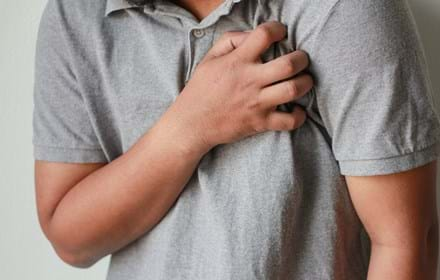
Researchers looking for a type 1 diabetes cure believe they are closer than ever to ending insulin injections
Researchers in Canada are reprogramming blood cells into insulin-producing cells to overcome the challenges of islet transplantation with the aim of eliminating the need for people living with type 1 diabetes to take insulin injections.
A new blood cell transplant technique is being worked on, that, if successful, would bypass the need for anti-rejection drugs and possibly keep people living with type 1 diabetes to require lifelong insulin injections.
Researchers at the University of Alberta in Canada are hard at work on what they hope will become the next big diabetes breakthrough.
Next year will mark the 100th anniversary since the discovery of insulin.
Previously DRWF-funded researcher Professor James Shapiro, Professor of Surgery in the Faculty of Medicine & Dentistry and Canada Research Chair in Transplantation Surgery and Regenerative Medicine, whose research led to the ground-breaking Edmonton Protocol for islet cell transplants to treat diabetes, is leading the study.
Professor Shapiro is working in collaboration with Greg Korbutt, Patrick MacDonald, Colin Anderson, Jean Buteau and Andrew Pepper from the University of Alberta and Timothy J. Kieffer from the University of British Columbia.
The team aims to transform blood cells from people living with type 1 diabetes into insulin-producing cells, which can then be transplanted back into the patient.
If successful, the technique would bypass the need for anti-rejection drugs and possibly reduce the need for people living with type 1 diabetes to take lifelong insulin injections to survive.
Professor Shapiro said he believed that removing the need for anti-rejection drugs—a critical component of current islet transplantation therapies that substantially increases the risk of cancer and life-threatening infections—would be a major step forward.
Professor Shapiro said: “We would like to be able to treat patients, including children, without the need of anti-rejection drugs. If we are successful enough, that will be as close to a cure for diabetes as I think we're ever going to see, and I am very excited about this.”
The project to develop a next-generation diabetes therapy recently received a $400,000 grant from the Stem Cell Network.

Picture: People with type 1 diabetes use daily insulin injections to keep their sugar levels under control.
The technique used in the project is based on a procedure from the winner of the 2012 Nobel Prize in Physiology or Medicine, Shinya Yamanaka. He discovered how to reprogramme skin cells, through the use of hormones and other growth factors, into inducible pluripotent stem cells (iPSC), which could then be induced to become any type of cell desired, such as heart cells beating in a dish.
Shapiro and his team have adapted this technique with the overarching goal of finding a cure for type 1 diabetes. They collect blood samples from patients and treat the cells with a cocktail of hormones and other growth factors to “turn them back in time” and induce them to become insulin-producing cells. When these cells have been transplanted into mice with type 1 diabetes, early results have proven promising.
Professor Shapiro said: “I like to think about it as alchemy, where you are turning dust into gold.”
Professor Shapiro said the latest work was guided by his previous research on the Edmonton Protocol was a breakthrough procedure that transplants islet cells harvested from donated pancreases to type 1 diabetes patients, temporarily freeing them from the need for insulin injections.
While researchers are some way off suggesting a timeline within which the new therapy could potentially be available, Professor Shapiro said he and his collaborators hoped to move toward clinical trials in the next few years.
Professor Shapiro said: “Clearly there is a long way to go and a lot of research that we have to do between these initial stages of experiments to be able to treat first a handful of patients, and ultimately people with diabetes across the world.”
Even if the technique is successful, Professor Shapiro noted much more work will be needed in the fields of robotic engineering, artificial intelligence and stem-cell science to improve the process and make it less labour-intensive. In the future, he envisions a mass production of iPSC and patient-personalised medicine to cure type 1 diabetes.
Professor Shapiro added: “This is the future, this is where the horizon is, this is where the sun is rising. I am confident that we, the industry and mankind will find a way to pay for this and justify the cost of these treatments because it will be so much better than insulin. It will prevent all the complications of diabetes and lead to a far better quality of life.”
Support DRWF by making a donation here
Find out more about DRWF-funded research here
Find out more about DRWF fundraising here
For latest update follow DRWF on Facebook, Instagram and Twitter
To receive the charity’s latest bulletins as they become available, please sign up here
Read DRWF diabetes information leaflets here
Join the Diabetes Wellness Network here
I would like to make a regular donation of
I would like to make a single donation of
There are lots of ways to raise money to support
people living with all forms of diabetes.
Bake, Swim, Cycle, Fly ... Do It For DRWF!
Fundraise with us
Recent News


